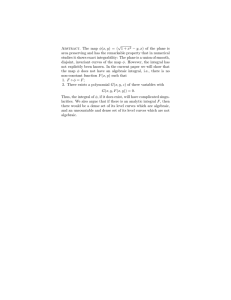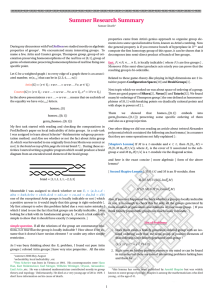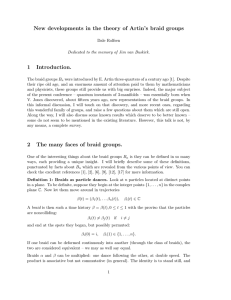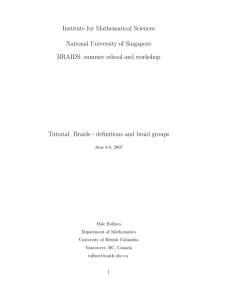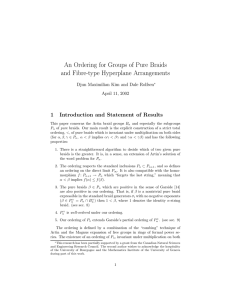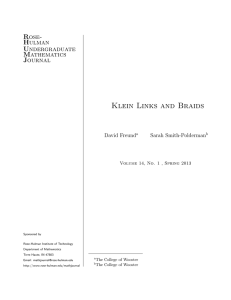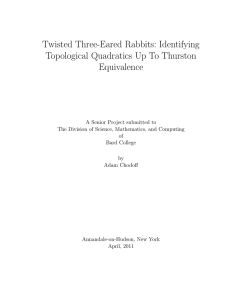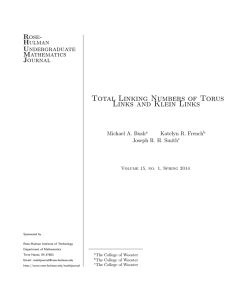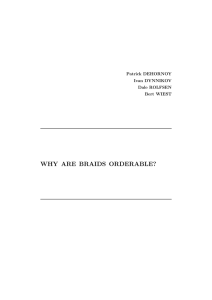Fedor DUZHIN Lecturer
advertisement
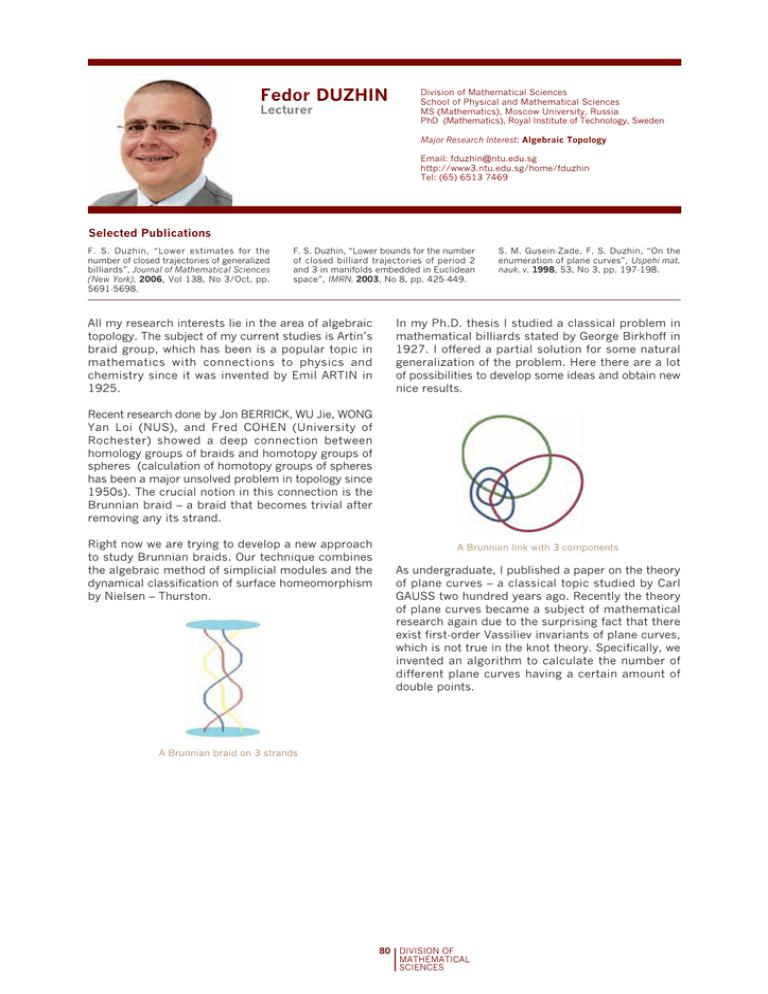
Fedor DUZHIN Lecturer Division of Mathematical Sciences School of Physical and Mathematical Sciences MS (Mathematics), Moscow University, Russia PhD (Mathematics), Royal Institute of Technology, Sweden Major Research Interest: Algebraic Topology Email: fduzhin@ntu.edu.sg http://www3.ntu.edu.sg/home/fduzhin Tel: (65) 6513 7469 Selected Publications F. S. Duzhin, “Lower estimates for the number of closed trajectories of generalized billiards”, Journal of Mathematical Sciences (New York). 2006, Vol 138, No 3/Oct, pp. 5691-5698. F. S. Duzhin, “Lower bounds for the number of closed billiard trajectories of period 2 and 3 in manifolds embedded in Euclidean space”, IMRN. 2003, No 8, pp. 425-449. All my research interests lie in the area of algebraic topology. The subject of my current studies is Artin’s braid group, which has been is a popular topic in mathematics with connections to physics and chemistry since it was invented by Emil ARTIN in 1925. S. M. Gusein-Zade, F. S. Duzhin, “On the enumeration of plane curves”, Uspehi mat. nauk. v. 1998, 53, No 3, pp. 197-198. In my Ph.D. thesis I studied a classical problem in mathematical billiards stated by George Birkhoff in 1927. I offered a partial solution for some natural generalization of the problem. Here there are a lot of possibilities to develop some ideas and obtain new nice results. Recent research done by Jon BERRICK, WU Jie, WONG Yan Loi (NUS), and Fred COHEN (University of Rochester) showed a deep connection between homology groups of braids and homotopy groups of spheres (calculation of homotopy groups of spheres has been a major unsolved problem in topology since 1950s). The crucial notion in this connection is the Brunnian braid – a braid that becomes trivial after removing any its strand. Right now we are trying to develop a new approach to study Brunnian braids. Our technique combines the algebraic method of simplicial modules and the dynamical classification of surface homeomorphism by Nielsen – Thurston. A Brunnian link with 3 components As undergraduate, I published a paper on the theory of plane curves – a classical topic studied by Carl GAUSS two hundred years ago. Recently the theory of plane curves became a subject of mathematical research again due to the surprising fact that there exist first-order Vassiliev invariants of plane curves, which is not true in the knot theory. Specifically, we invented an algorithm to calculate the number of different plane curves having a certain amount of double points. A Brunnian braid on 3 strands 80 DIVISION OF MATHEMATICAL SCIENCES
